在本港,武漢肺炎引起了很大恐慌。
當人們對疫症保持警剔時,亦應該對整個環境變化作出適當的反應,須謹記事實與現實,不能夠只待在恐慌之中。首先,對於感染武漢肺炎的恐懼是有待查證的,人們只會在接觸到染有武漢肺炎的人,才會感染到武漢肺炎。那麼染有武漢肺炎的人在哪裡?他們首先要從其他地方感染到病毒,人傳人的情況肯定存在,而病毒似乎只限於在家庭內(非常密切和持續的接觸)或在病人與醫護人員之間傳播。有一個病例,就是一名旅遊車司機在日本被武漢患者所感染,這個人傳人個案尚未有其他國家報道事件,至少到目前為止,並沒有傳媒報道出來。
現時香港有14宗武漢肺炎的確診個案(截至2月1日),這些個案近乎全部都來自內地,我們暫時未看到有社區傳播的感染鏈,即在香港出現人傳人的情況,至少到現在還未有。換句話說,香港未有發生「香港人傳染香港人」的個案,包括在街上、超級市場、餐廳、機場或辦公室!故此,市民實在無需要感到恐慌。很明顯,現時情況在本港存在很大的「政治恐慌」以及西方操控。讓我告訴你一個事實,就是流感每年在美國造成四萬人死亡,而武漢肺炎的死亡率僅為2%,但願這情況不會惡化。
在病人進入我們的診所之前,我們採取所有檢查程序,戴上口罩、頻密地洗手,因為我們都是謹慎的人,希望我們的努力,能加強病人、員工以及家人的信心。
在此,我附上內容寫得很好,一份由加拿大卑斯省疾病控制中心(BCCDC)提供的簡單指引;
1. 最重要的事情是人們要預防感染冠狀病毒,應頻密地清潔雙手和避免接觸自己的面部;
2. 冠狀病毒不會經由皮膚感染,病毒是經由人們把飛沫深深吸入肺部而感染;
3. 感染者的冠狀病毒是在人們肺部發現,人們必須吸入足夠病毒而且病毒深入到人們肺部;
4. 冠狀病毒不是透過空氣傳播,這病毒是通過飛沫在空氣中傳播,例如有患者打噴嚏;
5. 冠狀病毒亦不會經由人們之間的普通接觸傳播,人們必須在靠近患者的範圍(兩米範圍)並吸入患者的飛沫,例如患者在人們面前咳嗽或打噴嚏;
6. 當患者打噴嚏,帶有病毒的飛沫可能散在地上,而人們的手部可能會接觸到這些飛沫,在這情況下受感染的風險不高,因為飛沫、病毒必須有足夠的數量才會入侵到人們的肺部;
7. 如果人們接觸到一些物件而物件附有冠狀病毒,只要人們在接觸自己面部或口部前有清潔雙手,人們不會有感染病毒的危險;
8. 對病者而言,他們應該戴上口罩以免把病毒傳染給其他人,因為口罩能幫助病者不把病毒散播開去;
9. 若病者不能散播病毒,人們在社區上戴上口罩的效用就會較少,口罩可能會給予人們一種錯誤觀感,亦可能會使人們因為調整口罩而增加接觸面部的次數;
10. 如果人們有咳嗽,為免把病毒傳染給其他人,應該戴上口罩及掩住口鼻,亦應該與其他人保持距離,並且聯絡醫生使自己得到適切的評估、治療。
對於這次武漢肺炎的爆發,我們應該保持勇氣、清晰思維以及正向思考。就如所有病毒爆發一樣,我們會看到香港每年都會出現兩次流感爆發,我們經歷過SARS,知道可怕的伊波拉病毒(它的死亡率高達40%),而病毒會因為良好的社會衞生狀況、及早醫治管理(診斷、隔離和管理)病人而停止散播。
註:原文為呼吸系統科曾華德醫生於2020年2月2日所發,在網上流傳的英文信件,《港人講地》把原文翻譯並上載到本網站與讀者分享。
英文原文:
There has been a lot of panic for this Wuhan Pneumonia (WP) in HK.
While one should be vigilant and should respond to changes in the overall situation appropriately, one must also remember the facts and realities. One must not just panic. The fear of catching WP needs to be verified. You have to catch WP from someone who has the virus. Where is this patient with WP? This WP patient who will infect you needs to have caught it from somewhere else beforehand. There is clearly human-to-human transmission but this seemed to be confined to family circle (i.e. very close and persistent contact) or from patients to medical staff. There was ONE case of a coach driver infected by Wuhan patients in Japan, but this human-to-human infection has not been reported in other countries, or at least not yet.
Altogether we have 14 proven cases in HK and these are almost all from the Mainland. We do not seem to have a community-based infection chain i.e. human-to-human spread within Hong Kong, at least not yet. In other words, we do not have Hongkongers infecting Hongkongers in the streets, in the supermarkers, in the restaurants, in the airport or in the office, at least not yet! Hence there is no need to panic. There is clearly a lot of political panic and a lot of Western manipulation of this process. Let me tell you that influenza causes 40,000 deaths in America every year! Wuhan Pneumonia so far has a death rate of 2% only, God keep it like that please.
We are doing all the screening and checking procedures in the clinic to check out patients before they can access the clinic, to wear masks in the clinic and wash hands frequently, just to make sure because we are careful people. I hope our effort will instill confidence in our patients, staff and our family.
I attach some very well written and best of all, simple instructions from the Canadians from B.C. Centre for Disease Control (BCCDC):
1. The most important thing a person can do to prevent getting coronavirus is to wash their hands regularly and avoid touching their face
2. Coronavirus is not something that comes in through the skin. This virus is remitted through large droplets that are breathed deep into a person’s lungs.
3. Receptors for coronavirus are found deep in a person’s lungs. A person must inhale enough of the virus that it can actually bind to those receptors deep in the lungs.
4. Coronavirus is not airborne. The virus is transmitted through larger droplets that fall quickly out of the air — after a sneeze, for example.
5. Coronavirus is not something that people can get from casual contact. A person must be in close proximity (within two metres) with somebody to be able to inhale those droplets if a person coughs or sneezes in front of them without covering up.
6. The droplets can fall to the ground after a sneeze and a person can touch them with their hands. The risk of transmission is low in this case, as those droplets must be of significant enough quantity to make it to the receptors in a person’s lungs.
7. If a person has touched something that has droplets on it with coronavirus in it, as long as they clean their hands before touching their face or your mouth, they are not at risk of getting that virus in their body.
8. Masks should be used by sick people to prevent transmission to other people. A mask will help keep a person’s droplets in.
9. It may be less effective to wear a mask in the community when a person is not sick themselves. Masks may give a person a false sense of security and are likely to increase the number of times a person will touch their own face to adjust the mask or for other reasons.
10. Cover your mouth when you cough so you're not exposing other people. If you are sick yourself, stay away from others. Contact your health care provider ahead of time so you can be safely assessed.
I hope we all stay brave, clear in our mind and positive with this outbreak. Like all viral outbreaks, which we see twice a year in HK for influenza, and even for SARS, or the dreaded ebola (which kills 40% of patients), this one will stop with good social hygiene, and early medical management (diagnosis, isolation and management) of patients.
FollowYouTube


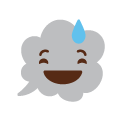

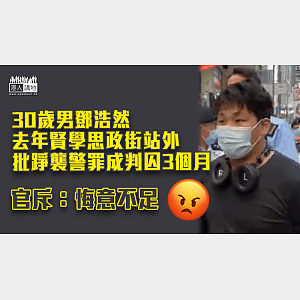
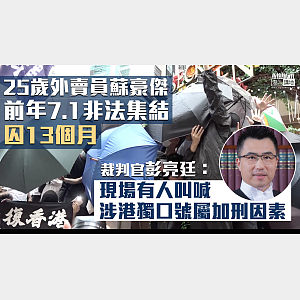
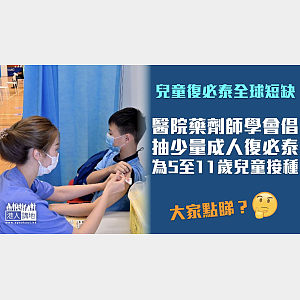

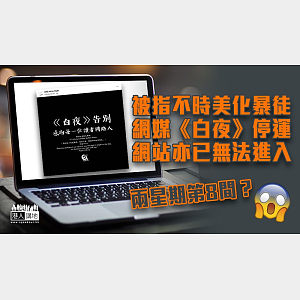

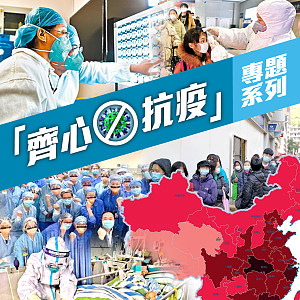









評論